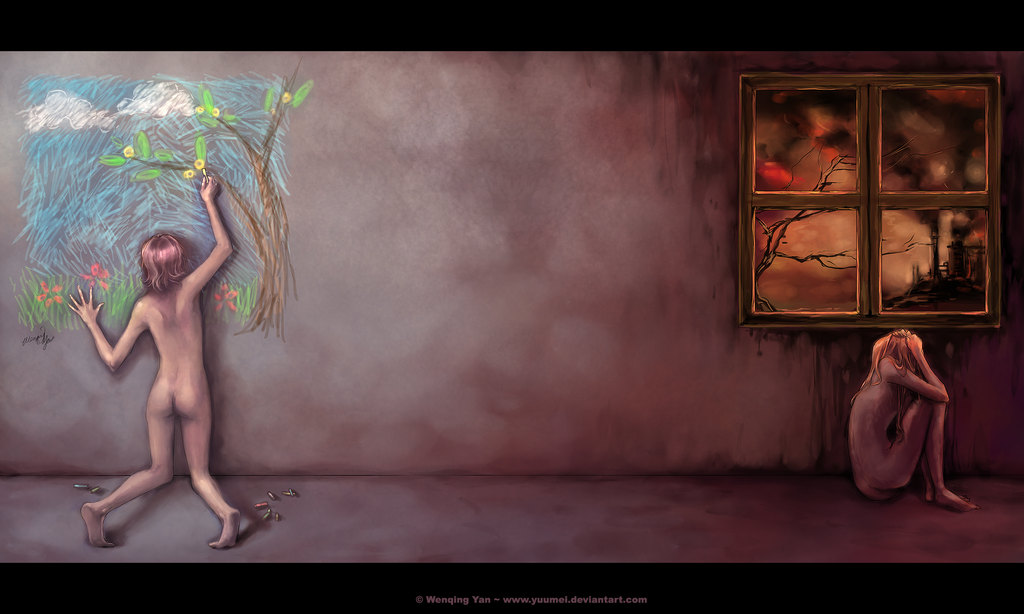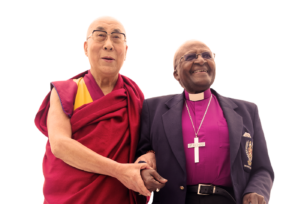
“I think I can, I think I can, I think I can,” puffs the little engine that can and it does pull the train over the mountain in the beloved children’s book The Little Engine That Could. Young and old readers rally to cheer the story of a determined train engine (notably, a self-effacing “she”) in Watty Piper’s picture book rendition of the traditional American values of optimism, hope, and can-doism.
 The message of The Little Engine goes straight to the heart of our deepest held cultural beliefs and aspirations: however modest our circumstances, by summoning courage and willpower, we can overcome. Like the sometimes bumbling and naïve heroes of Dickens, or the dim-witted dummlings in fairy tales, Piper’s little blue engine begins in self-doubt and ends in victory.
The message of The Little Engine goes straight to the heart of our deepest held cultural beliefs and aspirations: however modest our circumstances, by summoning courage and willpower, we can overcome. Like the sometimes bumbling and naïve heroes of Dickens, or the dim-witted dummlings in fairy tales, Piper’s little blue engine begins in self-doubt and ends in victory.
If only in the real world finding hope were as simple as reciting a positive mantra!
The word itself, hope, comes from the old English hopa and means confidence in the future. Wikipedia aligns hope with “expectation with confidence.” Over centuries the word’s meaning hasn’t much changed: to hope is to have trust in the future, even if the future is fraught with uncertainty and unknowns.
Hope is an essential curative for despair and necessary for survival, but as we face a new year in which struggle and sorrow abound, many of us feel depleted of hope. How can we balance accepting a difficult reality with preserving optimism about the future? Hope, it seems, is not backward-looking, but has its arms stretched out to the future.
 To feed the seeds of hopefulness, I recently turned to a conversation between sages, His Holiness the Dalai Lama and Archbishop Desmond Tutu. Each man has been marked by arduous travels on the road of suffering but has preserved his humanity and his joy. The two venerable world leaders met in Dharamasala, India to celebrate their birthdays (both men are in their eighties) and to discuss the world situation. The result of their conversation is recorded in The Book of Joy.
To feed the seeds of hopefulness, I recently turned to a conversation between sages, His Holiness the Dalai Lama and Archbishop Desmond Tutu. Each man has been marked by arduous travels on the road of suffering but has preserved his humanity and his joy. The two venerable world leaders met in Dharamasala, India to celebrate their birthdays (both men are in their eighties) and to discuss the world situation. The result of their conversation is recorded in The Book of Joy.
Despite the title, there is nothing superficial or Pollyannish about The Book of Joy. Every chapter steers the mind and heart toward hope. Their considered views concur: “No dark fate determines the future. We do. Each day and each moment, we are able to create and re-create our lives and the very quality of human life on our planet. This is the power we wield.”
Both men believe in our capacity to do good despite our capacity to also commit atrocities. When faced with video footage of disasters, our compassion “springs up.” We see this often in the flood of generosity from strangers after a national or international disaster. In fact, the desire to do good is our inherent nature, though sometimes conditioning obstructs this instinct. Desmond Tutu and His Holiness advise we can take heart that humankind is slowly evolving toward greater self-awareness. In Buddhist terms, we can count on our genuine warm-heartedness.
 When I asked renowned Jungian analyst Murray Stein about his perspective on hope, he sent me the following response: “I was thinking about what gives hope to people, and it occurred to me that when dreams of young children come to my patients, they always give a lift because children symbolize a future, and what is hope if not about the future?” He gave the example of a patient’s dream of a pregnancy and birth, images that signified a hopeful prospect for the patient’s new marriage and for a positive perspective on her own life.
When I asked renowned Jungian analyst Murray Stein about his perspective on hope, he sent me the following response: “I was thinking about what gives hope to people, and it occurred to me that when dreams of young children come to my patients, they always give a lift because children symbolize a future, and what is hope if not about the future?” He gave the example of a patient’s dream of a pregnancy and birth, images that signified a hopeful prospect for the patient’s new marriage and for a positive perspective on her own life.
“It’s out of dreams like this that hope gets born in people,” says Dr. Stein. In a chapter called “Turbulence in the Individuation of Humankind” in his latest book, Outside Inside and All Around, Dr. Stein draws a conclusion similar to that of the Dalai Lama and Desmond Tutu’s: “Human consciousness is increasing and moving toward the realization that we’re all in this together…You don’t see this movement toward consciousness from day to day or year to year, but looking over decades and centuries, I see improvement in the human condition on the planet and an advance of human consciousness.”
Of course, miscalculated or misguided hope can lead us into greater difficulty. Psychotherapist Jason Holley admits that in his practice, much of his work is in helping clients recognize they have placed their hope in hopeless situations—the husband who won’t stop drinking, the narcissistic mother or abusive boyfriend. We might call this blind faith, a denial to see reality, something quite different from cultivating an “eyes-wide-open” hopefulness.
 The possibility of a more conscious and compassionate humanity lets in a crack of hope in a world seething with difficulties. One doesn’t have to be a spiritual leader or a depth psychologist to find hope in a world seemingly depleted of reasons for hope. Even one of our greatest scientific geniuses, Albert Einstein, having discovered universal laws that govern “things unseen,” speculated that a benevolent force might be at work, a force that coordinates the exquisite workings of the universe. Later in his life, he wrote:
The possibility of a more conscious and compassionate humanity lets in a crack of hope in a world seething with difficulties. One doesn’t have to be a spiritual leader or a depth psychologist to find hope in a world seemingly depleted of reasons for hope. Even one of our greatest scientific geniuses, Albert Einstein, having discovered universal laws that govern “things unseen,” speculated that a benevolent force might be at work, a force that coordinates the exquisite workings of the universe. Later in his life, he wrote:
“I think the most important question facing humanity is, ‘Is the universe a friendly place?’ This is the first and most basic question all people must answer for themselves. For if we decide that the universe is an unfriendly place, then we will use our technology, our scientific discoveries and our natural resources to achieve safety and power by creating bigger walls to keep out the unfriendliness and bigger weapons to destroy all that which is unfriendly and I believe that we are getting to a place where technology is powerful enough that we may either completely isolate or destroy ourselves as well in this process. If we decide that the universe is neither friendly nor unfriendly and that God is essentially ‘playing dice with the universe’, then we are simply victims to the random toss of the dice and our lives have no real purpose or meaning. But if we decide that the universe is a friendly place, then we will use our technology, our scientific discoveries and our natural resources to create tools and models for understanding that universe. Because power and safety will come through understanding its workings and its motives.”
“God does not play dice with the universe.”
The story of The Little Engine That Could inspires the reader to try harder and invest hope in her capacity for success, but to sustain hope when the odds are against us, and our inner and outer resources have withered, requires that we look beyond the Ego ideals of self-determination and self-improvement. Hope is the domain of soul and what I call “the daily miraculous.” Just as Einstein marveled at the intricate order of the universe, so, too, might we seek the territory of awe and embrace its manifestations. What we feed ourselves matters. What we take in and acknowledge—with our eyes and ears as well as our mouths—determines our health—mind, body and spirit. A steady diet of negativity, defeatism, and cynicism can only perpetuate fear and despair.
Everywhere the daily miraculous sends communiqués to our spirit. As T.S. Eliot writes in The Four Quartets:
. . . Music heard so deeply
That it is not heard at all, but you are the music
While the music lasts.
 Consider these small miracles.
Consider these small miracles.
- A hummingbird’s wings beat 720 to 5400 beats per minute. Its metabolism is a hundred times faster than an elephant’s. Its brain is 4.2 % of its body weight, which is approximately the weight of a penny, but despite its tiny size, hummingbirds hear better and see farther than humans. Hummingbirds fly over five hundred miles across the Gulf of Mexico in twenty hours without stopping. They can remember every flower they have ever visited.
- Honeybees can differentiate hundreds of different floral odors from miles away. A honeybee will fly 90,000 miles, the equivalent of three orbits around the earth to collect 1 kilogram of honey. A bee’s brain is the size of a sesame seed but has a remarkable ability to learn, remember and calculate.
- When your skin is cut, you bleed. Unless severe, the cut stops bleeding within minutes. Soon the edges of the wound close. A scab forms and new skin grows over the injury. Millions of complex biological functions that facilitate healing occur without our willing or even noticing them.
French philosopher Maurice Merleau-Ponty postulated that we live in an inter-subjective field with all life and the natural world. For him, the world is not just speaking to us but is also listening to us. We walk through the woods and admire the trees while the trees may be watching and admiring us! More than a mind-trip, a neatly stated slogan, or immutable orthodoxy, hope may originate in a palpably lived experience of awe and wonder at our interconnectedness with everything else on the planet. To be enchanted by the world is to be a participant and not simply a spectator.
If anything I’ve written here has prodded your curiosity, try keeping a journal of things that daily awe, amaze, or enchant you. Inhabiting this quality of reverie may be your path to hope.
This post appeared in a slightly different form on Dale’s blog on Psychology Today. You can find all of Dale’s blog posts for Psychology Today at